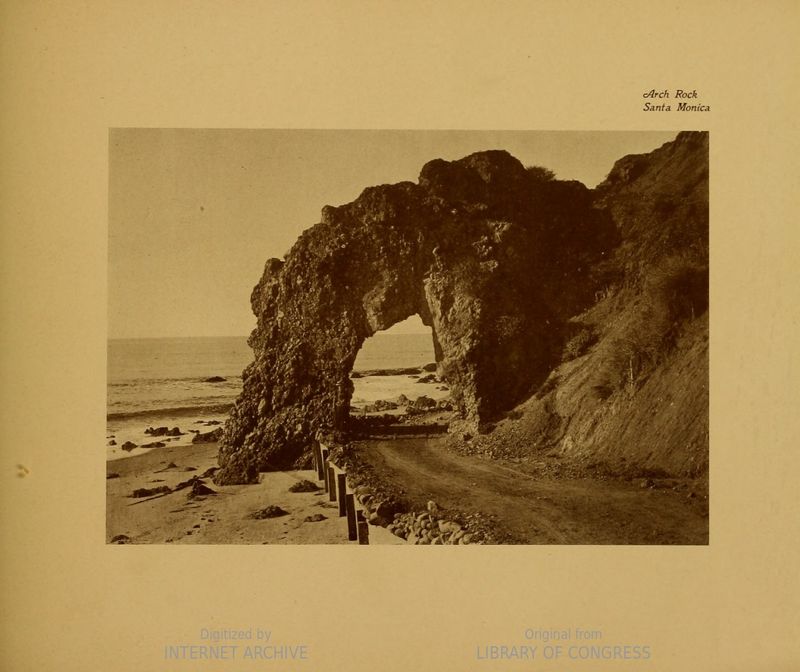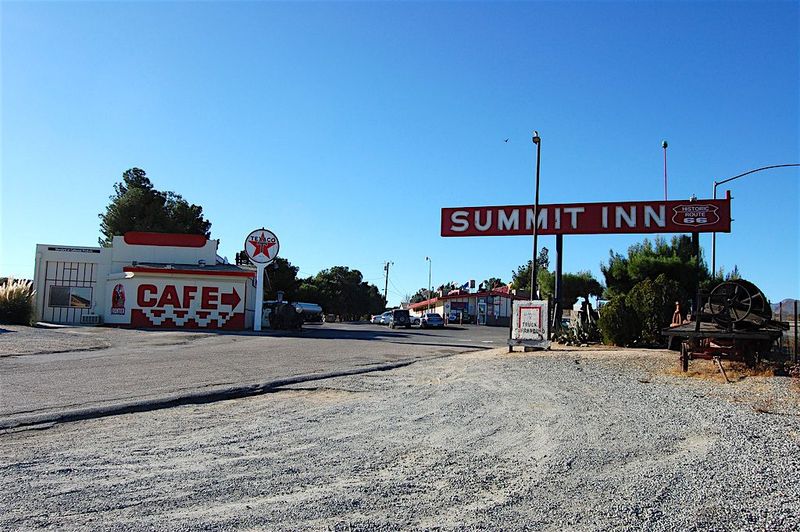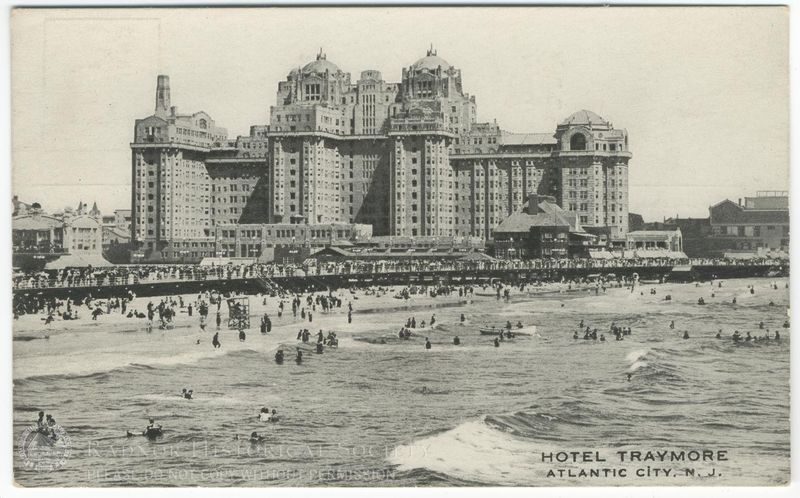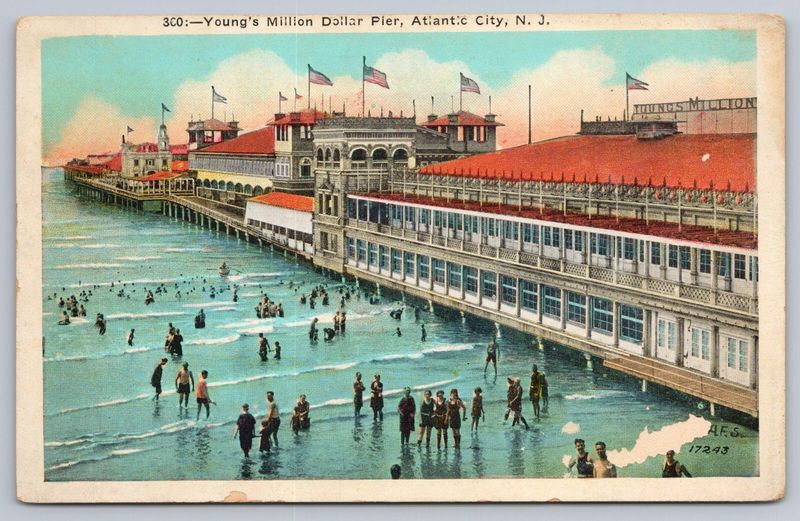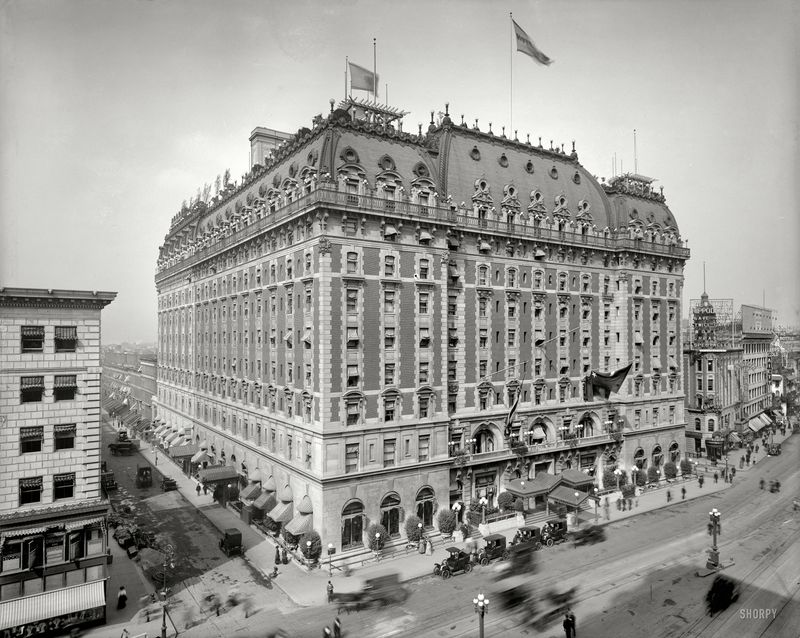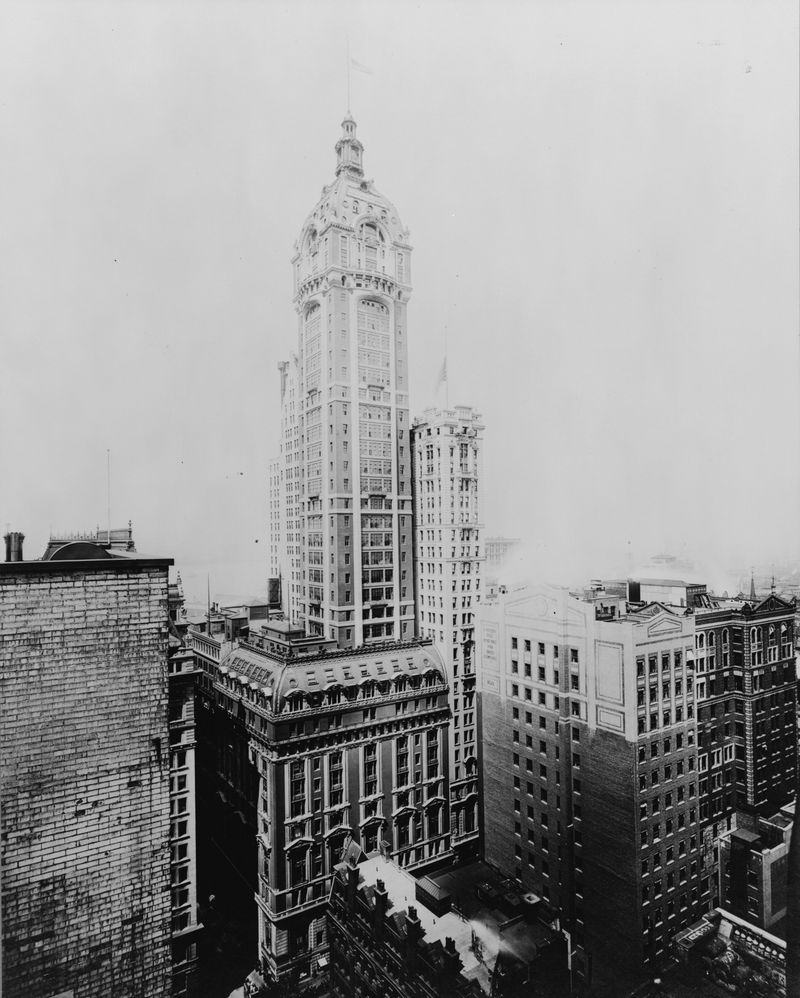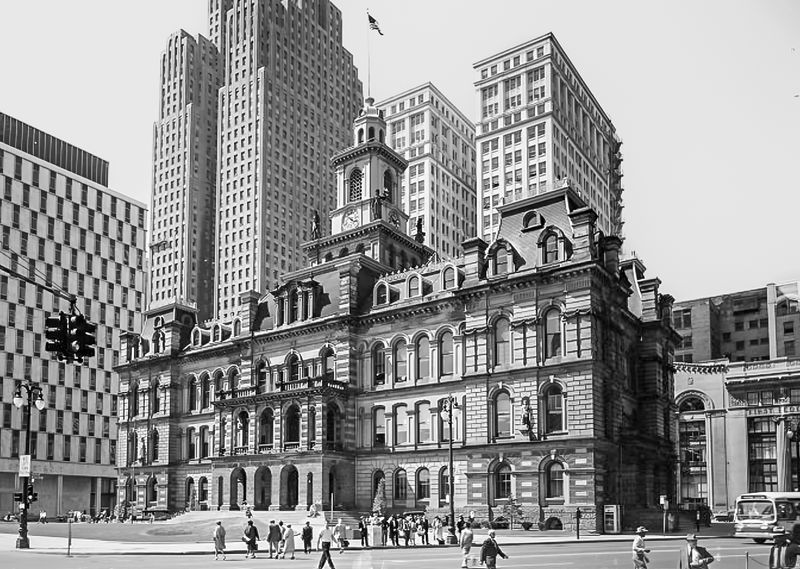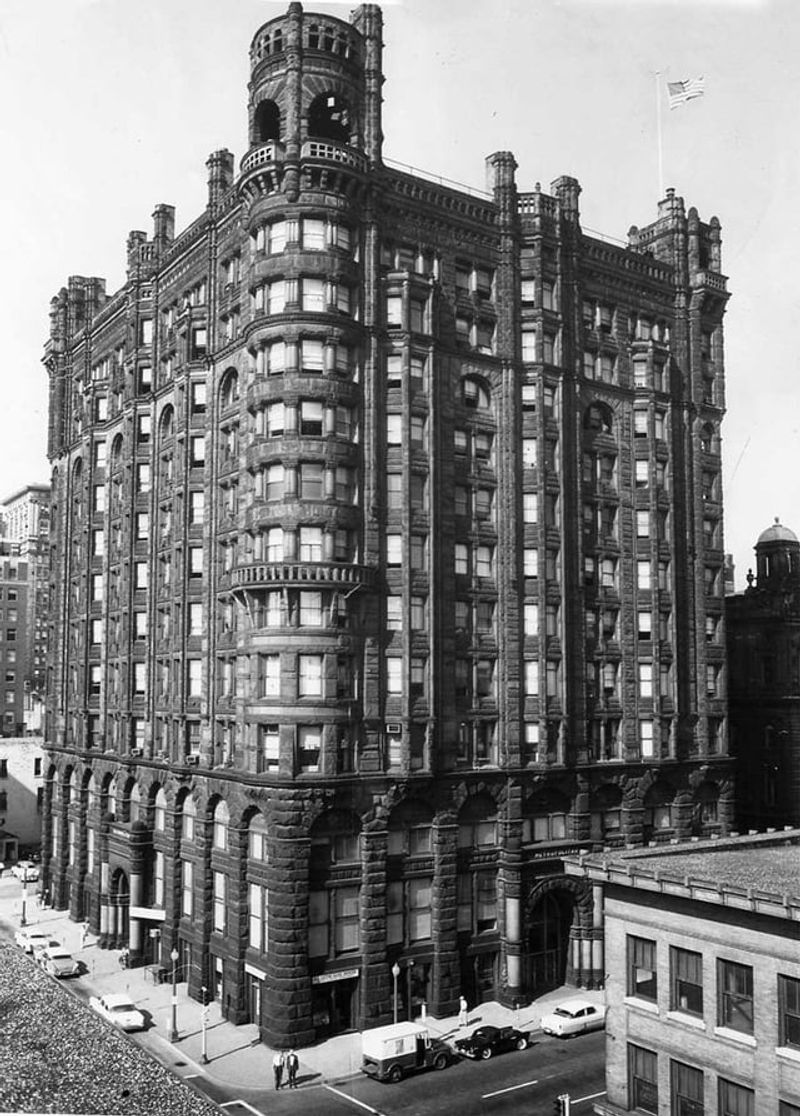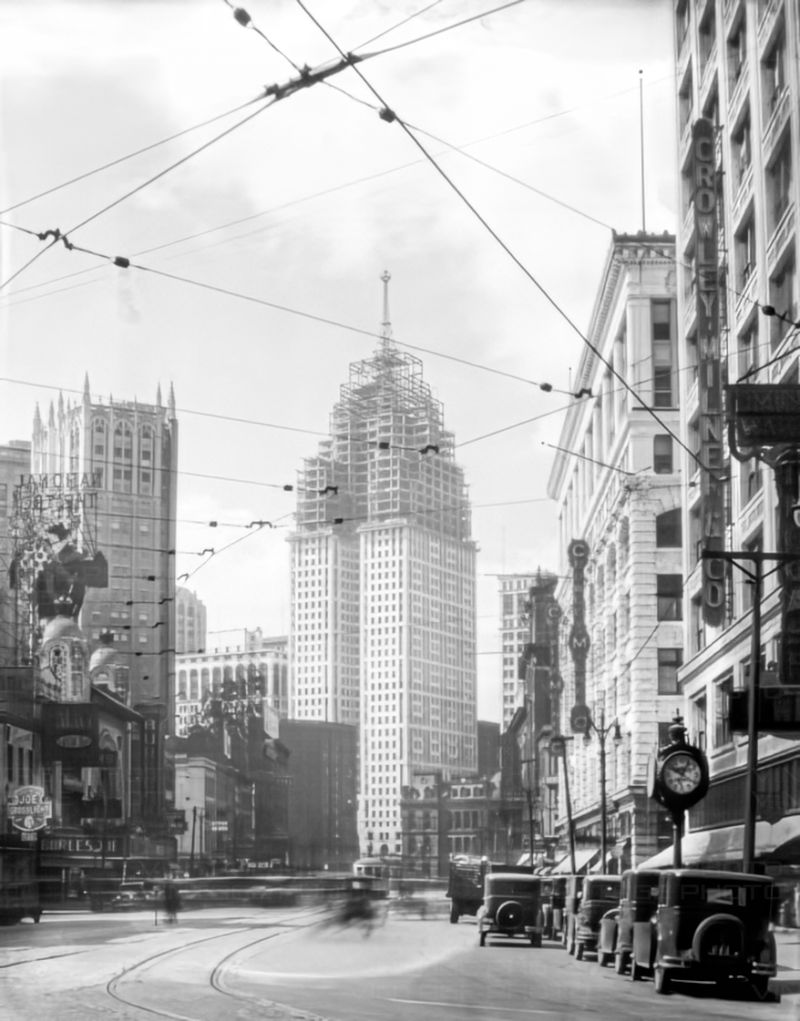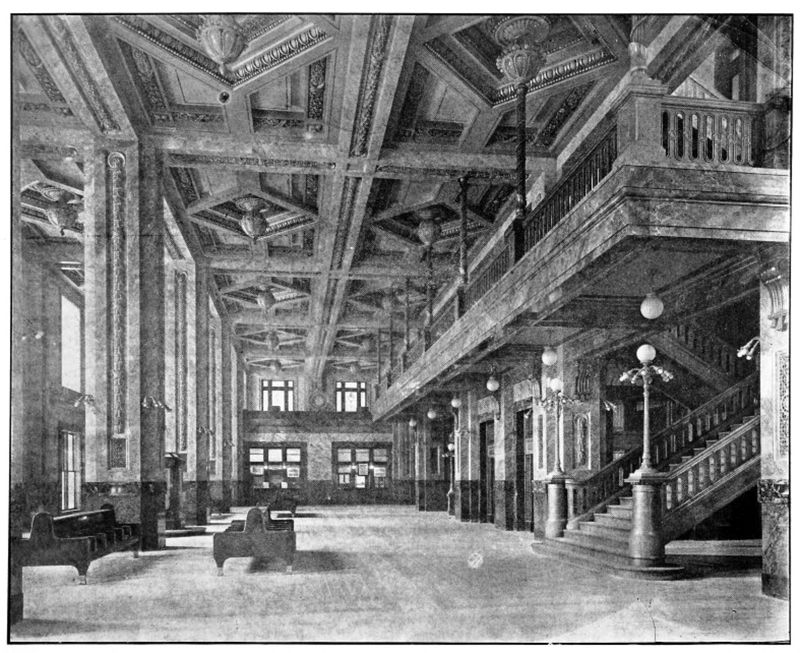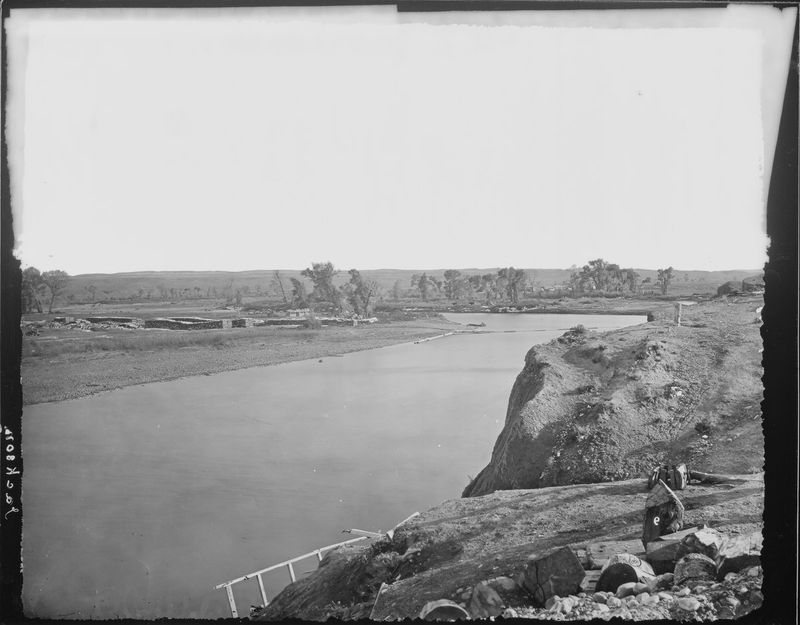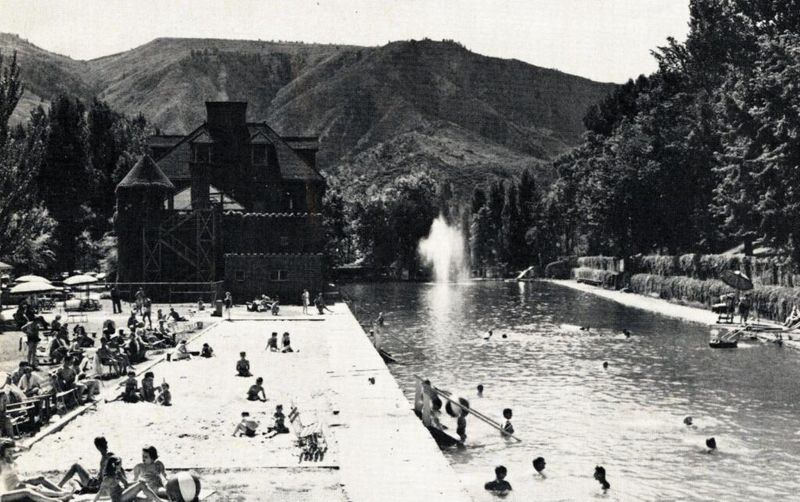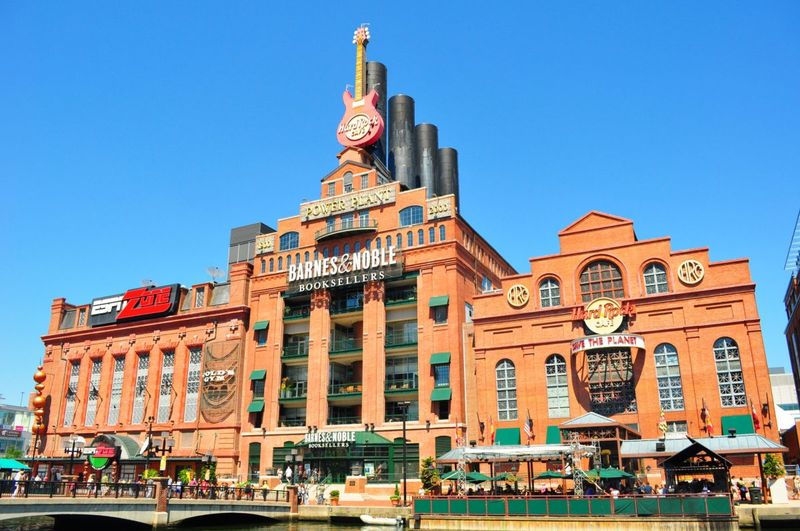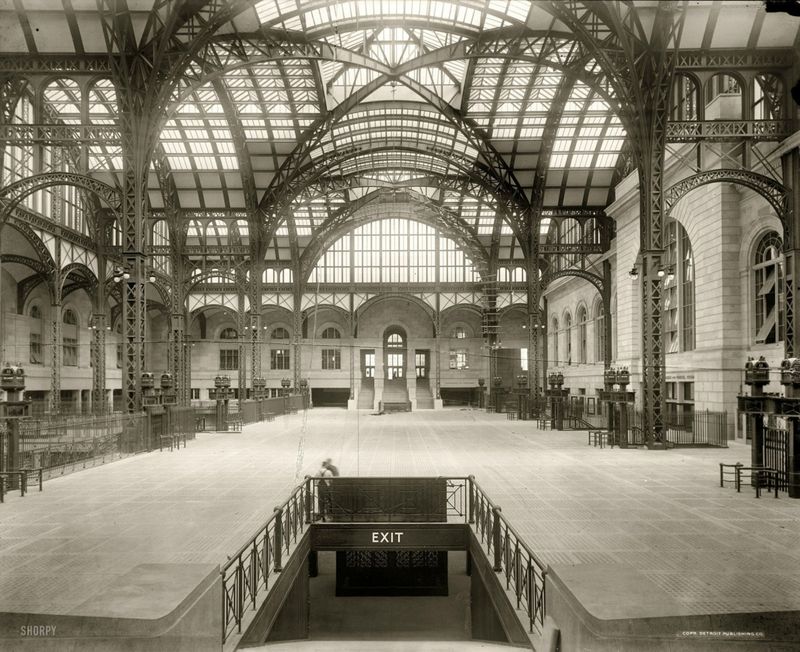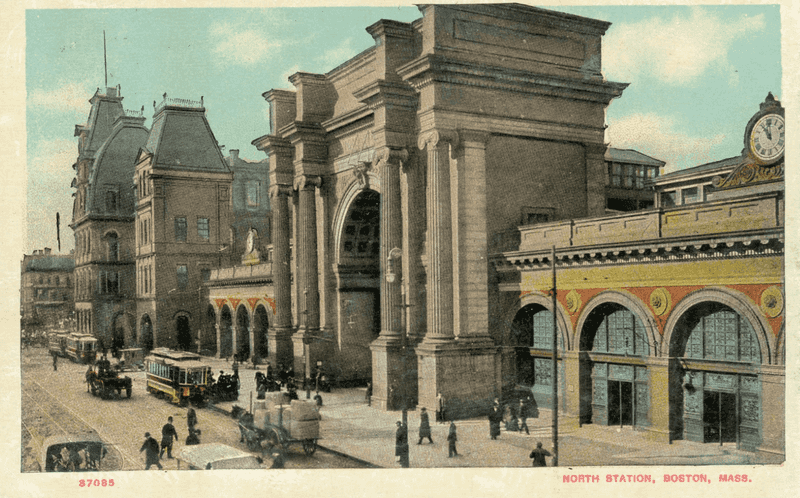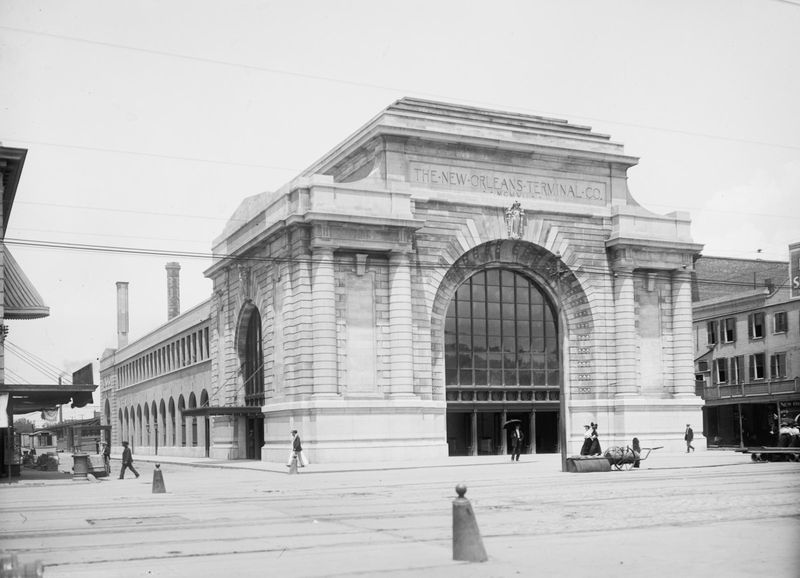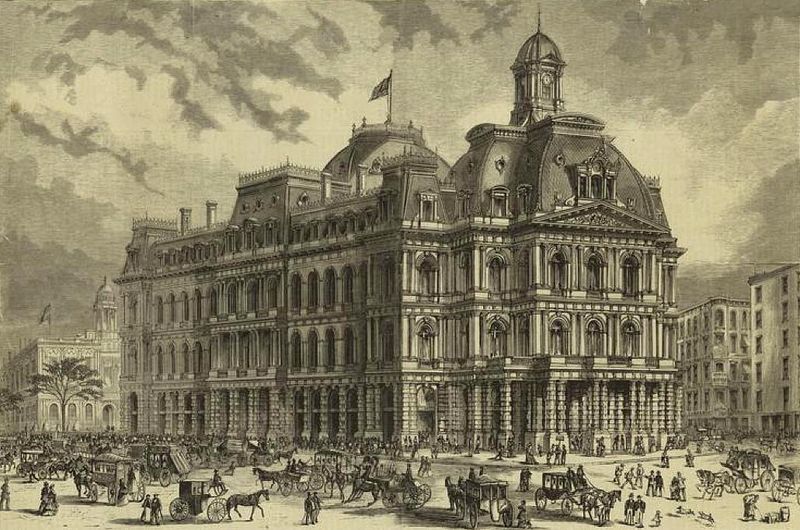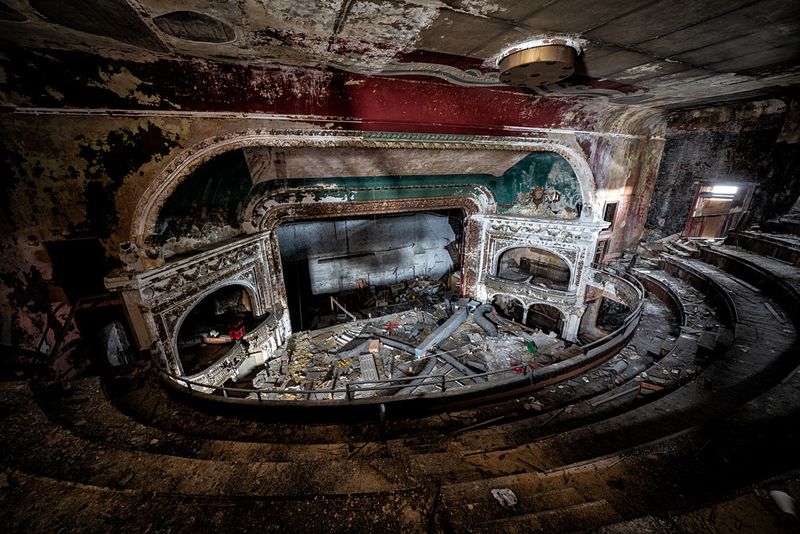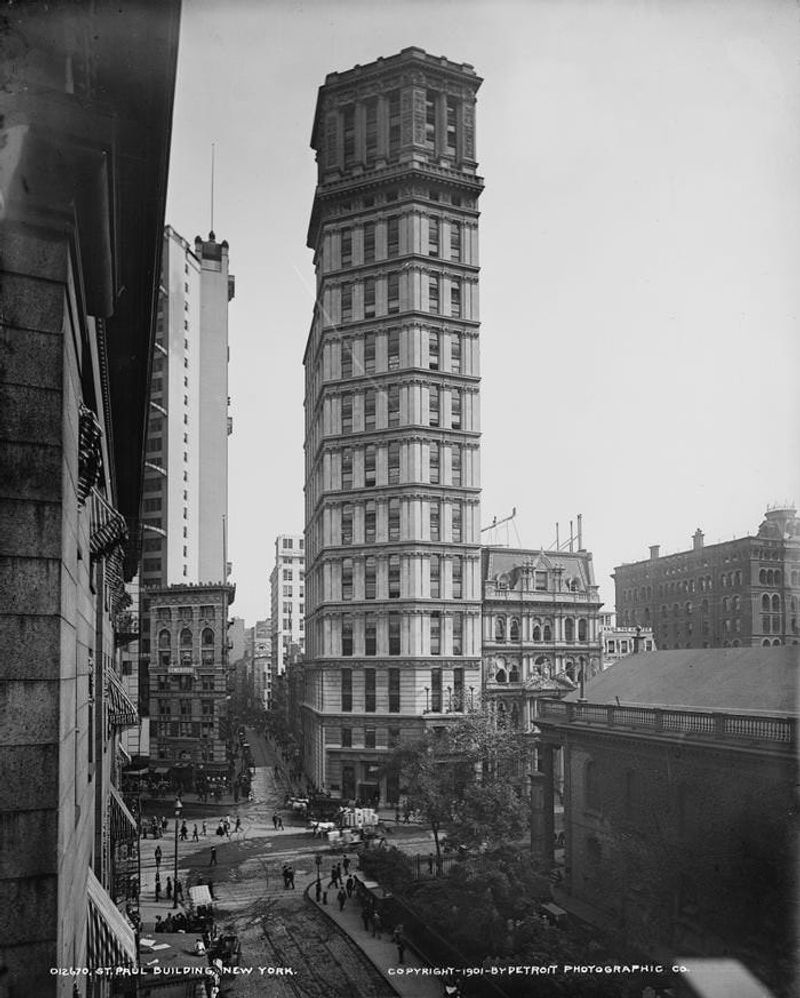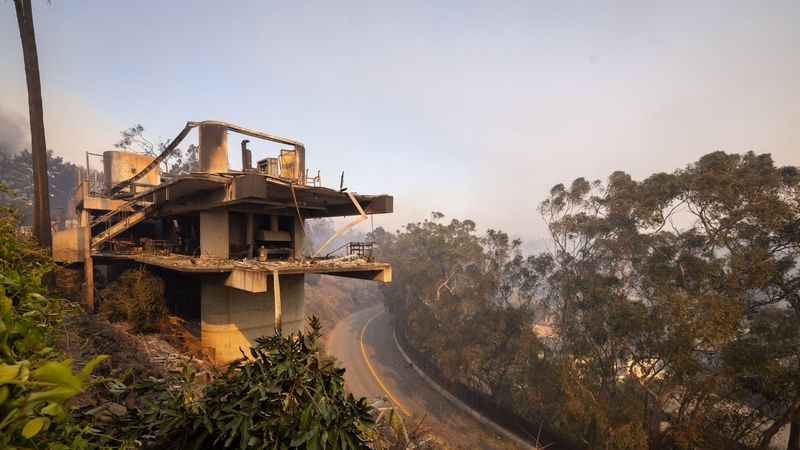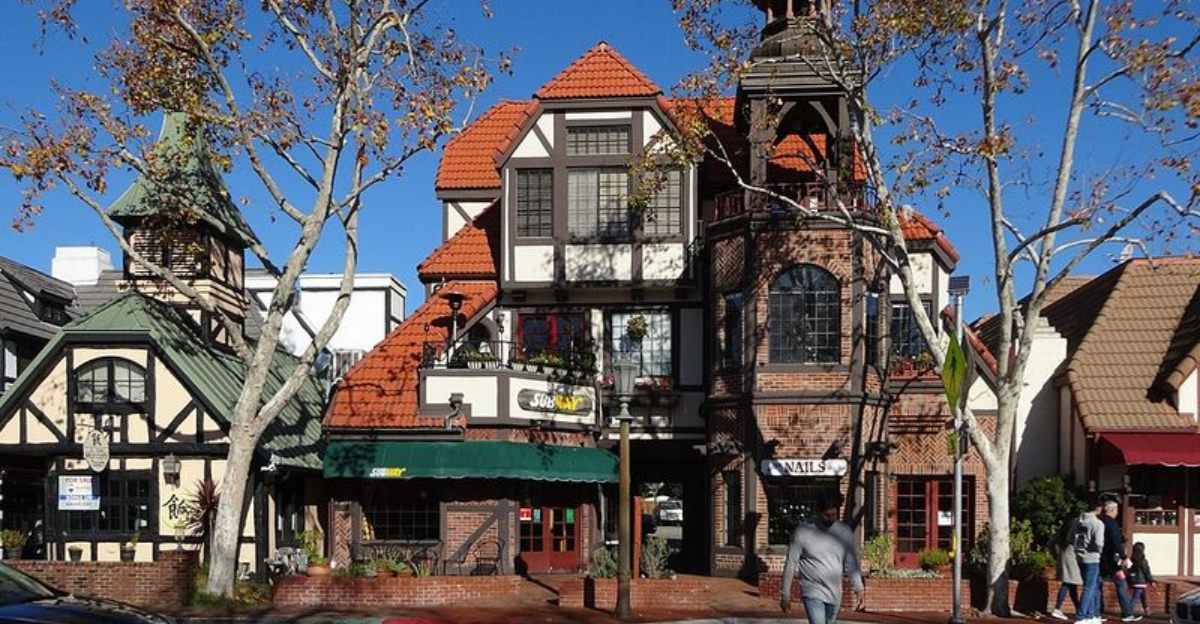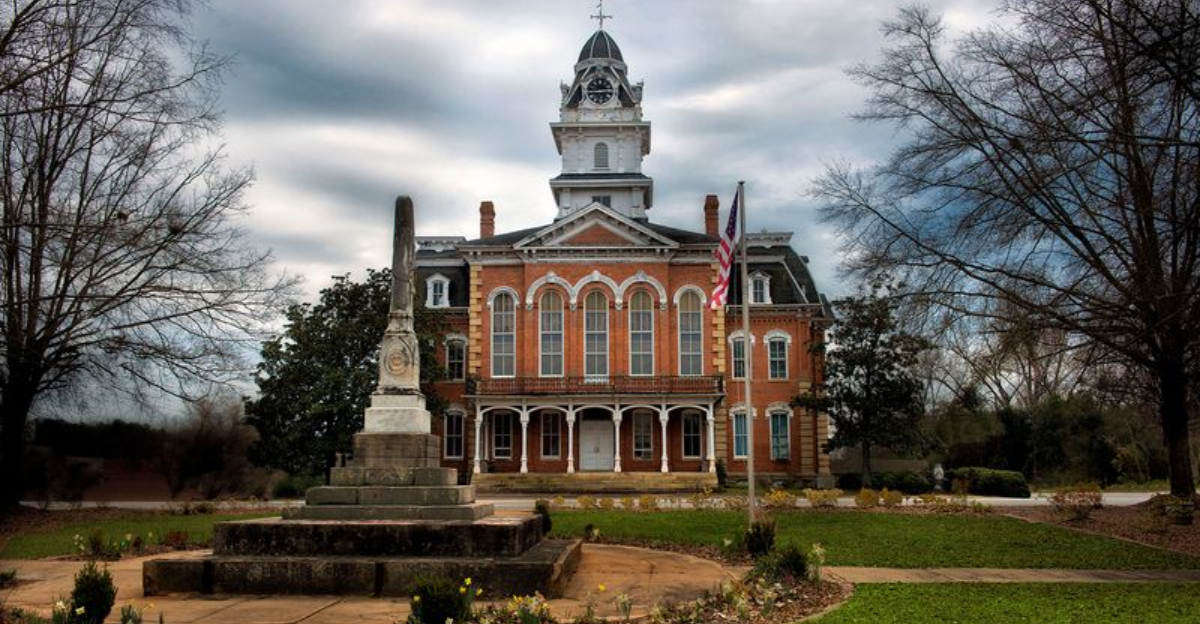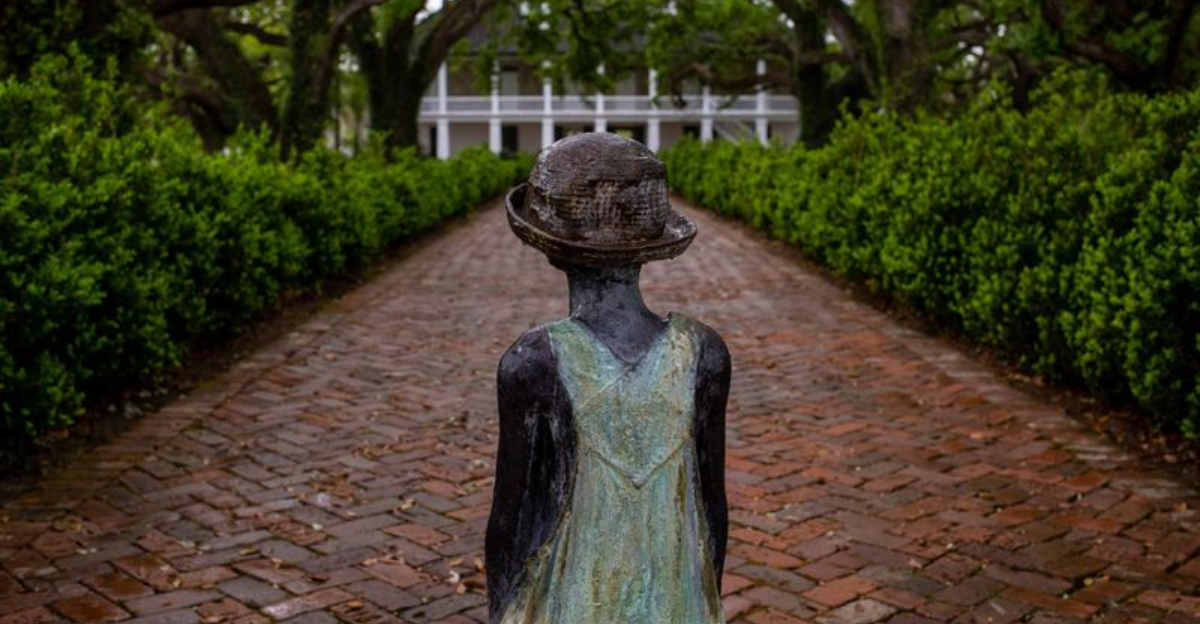20 Iconic U.S. Landmarks From California To New Jersey That Faded Into The Past
America’s landscape has changed dramatically over the decades, with many beloved architectural treasures now existing only in photographs and memories.
Magnificent hotels, grand terminals, natural wonders, and iconic buildings once defined their locations and attracted visitors from around the world.
Join me as we remember twenty remarkable places that have disappeared from our nation’s skyline and countryside.
1. Arch Rock (Topanga, California)
Mother Nature crafted this magnificent natural bridge along Topanga State Beach, where it stood as a photographer’s paradise for generations.
The stunning formation resembled a giant stone rainbow emerging from the Pacific waves.
Sadly, after weathering countless storms since prehistoric times, this beloved landmark collapsed unexpectedly in 1982.
Beach walkers now pass its former location with no evidence that the majestic arch ever existed.
2. Summit Inn (Oak Hills, California)
Perched along historic Route 66, this charming roadside diner welcomed weary travelers with its neon sign and famous buffalo burgers since 1952.
Elvis Presley reportedly visited regularly, always ordering the same apple pie.
The devastating Blue Cut Fire of 2016 reduced this beloved desert landmark to ashes in mere minutes.
Despite community efforts to rebuild, the replacement structure never recaptured the authentic mid-century charm that made the original so special.
3. Hotel Traymore (Atlantic City, New Jersey)
Towering majestically above the Atlantic City Boardwalk, this ten-story Beaux-Arts masterpiece once reigned as the world’s largest hotel.
With its distinctive four-tower design and ornate white façade, the Traymore defined luxury for generations of beachgoers.
Imploded in spectacular fashion in 1972, the demolition required over 1,000 dynamite charges.
The hotel’s footprint now hosts modern casino developments, erasing all physical evidence of this grand dame that hosted presidents and celebrities throughout the early 20th century.
4. Young’s Million Dollar Pier (Atlantic City, New Jersey)
Jutting nearly a half-mile into the Atlantic Ocean, this extraordinary entertainment complex featured everything from dance halls to exotic animal exhibits.
Visitors marveled at its grand ballroom where they could literally dance above the ocean waves.
Captain John Young’s ambitious creation opened in 1906 with President Theodore Roosevelt cutting the ribbon.
Fire claimed portions of the pier multiple times before its complete demolition in 1981, ending an era of old-fashioned seaside amusement that modern casinos could never replicate.
5. Hotel Astor (New York)
Watching a Broadway show and staying at the Astor once represented the quintessential New York experience.
Crowned with its stunning rooftop garden, this Times Square palace hosted the city’s most prestigious social gatherings for over six decades.
Within its green marble lobby, celebrities and politicians mingled beneath crystal chandeliers.
The wrecking ball arrived in 1967, making way for an unremarkable office tower, erasing this Gilded Age masterpiece that had welcomed guests since 1904.
6. The Singer Building (New York)
Reaching an unprecedented 612 feet into the Manhattan sky, this slender tower briefly held the title of world’s tallest building in 1908.
Its distinctive beaux-arts silhouette, topped with a lantern dome, made it instantly recognizable on the skyline.
Financial considerations sealed its fate in 1968, making it the tallest building ever intentionally demolished until 9/11.
Modern preservationists consider its destruction one of New York’s greatest architectural losses, as nothing comparable has been built since.
7. Detroit City Hall (Michigan)
Victorian grandeur reached its peak in this ornate masterpiece that once dominated Detroit’s skyline.
Intricate stonework, arched windows, and a massive clock tower made this 1871 structure the pride of Michigan’s rapidly growing industrial center.
Despite public protests, officials demolished the building in 1961 to make way for modern development.
Many Detroiters still consider this controversial decision a pivotal moment that began the city’s architectural decline, sacrificing history for a vision of progress that never fully materialized.
8. Metropolitan Building (Buffalo)
Rising thirteen stories above Buffalo’s busiest intersection, this terracotta-clad skyscraper featured a spectacular two-story arched entrance that stopped pedestrians in their tracks.
Gold leaf detailing and intricate sculptures adorned its exterior, showcasing the city’s early 20th century prosperity.
Urban renewal programs of the 1960s sealed its fate despite architectural significance.
The vacant lot created by its demolition remained empty for decades, a painful reminder of short-sighted planning decisions that robbed Buffalo of its architectural heritage.
9. Majestic Building (Detroit)
Gleaming white terracotta covered this extraordinary skyscraper, making it appear to glow against Detroit’s industrial skyline.
Completed in 1896, its fourteen stories housed the city’s first theater designed exclusively for motion pictures.
Innovative fireproof construction techniques made it a marvel of engineering.
Despite its historical importance and sturdy construction, economic pressures led to its demolition in 1962, replaced by a simple parking lot that remains today – a sobering symbol of urban decay.
10. Wabash Station (Pittsburgh)
Entering through the station’s massive Roman arch transported travelers into a cathedral-like space where sunlight streamed through stained glass onto marble floors.
Completed in 1904, this transportation palace served the Wabash Railroad’s ambitious expansion into Pittsburgh.
Financial troubles plagued the railroad almost immediately. The station’s glory was short-lived, with demolition coming in 1954 after years of declining rail travel.
Today, only photographs preserve the memory of this architectural gem that once welcomed thousands of daily passengers.
11. Fort Steele (Wyoming)
Nestled beneath Wyoming’s rugged mountains, this frontier outpost protected settlers and railroad workers during the tumultuous 1860s.
Rough-hewn log buildings and a commanding stockade wall stood as America’s western defense line.
Unlike many historic structures lost to development, Fort Steele succumbed to nature and neglect after the Army departed.
Wind, weather, and occasional flooding gradually reclaimed the site. Today, only foundation stones and interpretive signs mark where this important military installation once stood.
12. Glenwood Springs Original Hot Springs Resort (Colorado)
Victorian elegance met natural wonder at this breathtaking mountain retreat where enormous wooden bathhouses extended over steaming mineral pools.
Constructed in 1888, the original complex featured ornate gingerbread trim and elaborate covered walkways connecting therapeutic bathing facilities.
Frequented by celebrities including Theodore Roosevelt, the resort defined luxury in the American West.
Fire destroyed much of the original wooden architecture in 1893, with subsequent rebuilds maintaining the function but never recapturing the fairy-tale Victorian charm that made the original structures so remarkable.
13. Pratt Street Power Plant (Baltimore)
Massive brick smokestacks reached toward the sky from this industrial cathedral that powered Baltimore’s streetcar system for generations.
Built in stages between 1900-1909, the complex featured magnificent arched windows and intricate brickwork rarely seen in utilitarian structures.
While the exterior shell remains today as part of a shopping complex, the original industrial heart – massive generators, control rooms, and coal handling equipment – has been gutted.
The authentic power plant experience, with its humming turbines and control panels, exists only in photographs and memories.
14. Pennsylvania Station (New York)
Sunlight poured through enormous steel and glass vaults into the largest indoor space in New York City.
Modeled after ancient Roman baths, this transportation palace welcomed travelers with pink granite columns and a waiting room larger than St. Peter’s Basilica.
The station’s 1963 demolition sparked the modern preservation movement.
Replaced by the current underground facility and Madison Square Garden, its destruction remains architecture’s most famous martyrdom.
15. Boston’s North Terminal Station
Rising like a medieval castle above Boston’s waterfront, this granite fortress with its distinctive clock tower welcomed New England travelers for nearly a century.
Intricate stonework and a soaring central arch created a monumental entrance to the bustling terminal.
Completed in 1893, the station featured a 700-foot train shed – then the largest in the world.
The building met the wrecking ball in 1927 despite public outcry, replaced by a more modern facility that itself no longer exists, creating a double erasure of Boston’s transportation heritage.
16. Canal Street Terminal Station (New Orleans)
Wrought iron balconies and delicate latticework gave this extraordinary terminal a distinctly New Orleans character unlike any other American transportation hub.
Completed in 1908, it combined French Quarter elegance with modern functionality.
Travelers passed through grand waiting rooms adorned with crystal chandeliers and marble floors.
Declining rail travel led to its demolition in 1954, despite architectural significance and solid construction.
17. City Hall Post Office (New York)
Looming over City Hall Park like a French château transported to Manhattan, this extraordinary structure combined Renaissance and Second Empire styles with distinctively American grandeur.
Completed in 1880 after 11 years of construction, it cost an astronomical $7 million – equivalent to over $180 million today.
Critics initially called it “Mullett’s Monstrosity” after its architect. Public opinion eventually shifted to appreciate its ornate beauty, but too late.
The building fell to demolition in 1939, replaced by a park that reveals nothing of the magnificent postal palace that once stood there.
18. Keith’s Theatre (Philadelphia)
Gilded age opulence reached its peak in this entertainment palace where red velvet seats faced a stage framed by an enormous proscenium arch dripping with gold leaf ornamentation.
Opened in 1902, the theater represented the crown jewel of the Keith-Albee vaudeville circuit.
Marble staircases and crystal chandeliers welcomed Philadelphia’s elite for decades.
Silent film and later talkies temporarily saved the venue from declining vaudeville attendance, but changing entertainment habits eventually led to its closure and 1971 demolition despite preservation efforts.
19. Gillender Building (New York)
Reaching skyward with improbable slenderness, this pioneering skyscraper occupied a tiny triangular lot measuring just 26 by 73 feet.
Completed in 1897, its 20 stories made it one of the tallest buildings in the world on one of the smallest footprints.
Financial district workers marveled at its seemingly impossible proportions.
Astonishingly, this architectural wonder stood for only 13 years before being demolished for a larger building – possibly the shortest lifespan of any major skyscraper in history, making it a symbol of New York’s relentless reinvention.
20. Robert Bridges House (Pacific Palisades, California)
Suspended dramatically over a coastal ravine, this modernist masterpiece by Richard Neutra seemed to float among the treetops with its revolutionary cantilevered design.
Completed in 1934, its glass walls erased boundaries between interior and nature.
Architectural students and enthusiasts made pilgrimages to study its innovative construction.
Sadly, neglect and structural issues led to its demolition in the 1980s, erasing a pioneering example of California modernism that influenced countless homes throughout the state.

